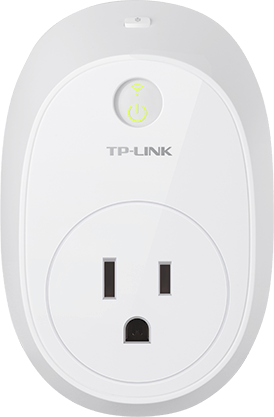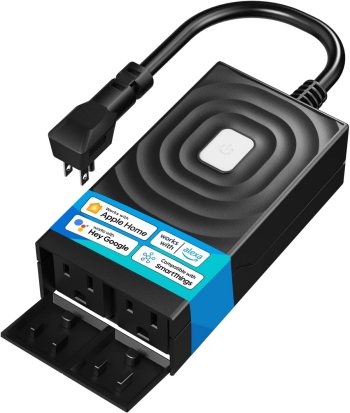- Energy monitoring feature
- Voice assistant compatibility
- Easy to use app
- Weather-resistant design
- Supports multiple voice assistants
- Two independently controlled outlets
- Bulky design
- Limited to 2.4GHz Wi-Fi
- Limited to 2.4GHz Wi-Fi
- Requires a covered outdoor outlet
TP-Link HS110 vs Meross MSS620
The world of smart home devices has exploded in recent years, with a plethora of innovative products vying for our attention. Two popular options in the realm of smart plugs are the TP-Link HS110 and the Meross MSS620. Both of these smart plugs offer a range of features that make them attractive to homeowners looking to upgrade their living spaces. In this comparison, we'll delve into the details of each product, highlighting their similarities and differences.
Firstly, let's establish what smart plugs are: they're devices that plug into your wall outlets and allow you to control and monitor the appliances connected to them remotely. This can be done using a smartphone app, voice assistant, or web interface. Smart plugs like the TP-Link HS110 and Meross MSS620 offer a convenient way to turn devices on and off, schedule operations, and even track energy consumption.
Design and Build
The TP-Link HS110 has a compact design that fits snugly into most wall outlets. It's made of high-quality plastic and features a single outlet with a maximum load capacity of 15A. The Meross MSS620, on the other hand, has a slightly larger footprint but still manages to fit into standard outlets. Its build quality is also robust, with a similar maximum load capacity of 15A.
Features
Both smart plugs offer a range of features that make them appealing to users. Here are some key similarities and differences:
- Remote Control: Both the TP-Link HS110 and Meross MSS620 can be controlled remotely using their respective smartphone apps (TP-Link Smart Home and Meross Smart). This allows you to turn devices on and off, schedule operations, and monitor energy consumption from anywhere.
- Scheduling: Both smart plugs support scheduling, which enables you to automate tasks such as turning lights or appliances on and off at specific times of the day.
- Energy Monitoring: The TP-Link HS110 has a built-in energy monitoring feature that tracks the power consumption of connected devices. The Meross MSS620 also offers energy monitoring, but it's not as detailed as the TP-Link's implementation.
- Voice Assistant Integration: Both smart plugs support integration with popular voice assistants like Amazon Alexa and Google Assistant, allowing for seamless voice control.
Key Differences
While both smart plugs share many similarities, there are some key differences to consider:
- Price: The Meross MSS620 is generally priced lower than the TP-Link HS110, making it a more budget-friendly option.
- Wi-Fi Connectivity: The TP-Link HS110 supports 2.4GHz and 5GHz Wi-Fi frequencies, while the Meross MSS620 only supports 2.4GHz.
- Away Mode: The TP-Link HS110 has an "Away Mode" feature that randomly turns devices on and off to simulate occupancy, making it a useful security feature. The Meross MSS620 does not have this feature.
Conclusion
In conclusion, both the TP-Link HS110 and Meross MSS620 are excellent smart plugs that offer a range of features to enhance your smart home experience. While they share many similarities, the TP-Link HS110 has a more detailed energy monitoring system and supports 5GHz Wi-Fi connectivity. On the other hand, the Meross MSS620 is a more budget-friendly option with a similar set of features.
Ultimately, the choice between these two smart plugs depends on your specific needs and preferences. If you're looking for a more advanced energy monitoring system and don't mind paying a premium, the TP-Link HS110 may be the better choice. However, if you're on a budget and want a reliable smart plug with a similar set of features, the Meross MSS620 is definitely worth considering. As the world of smart plugs continues to evolve, it's exciting to see innovative products like these two offerings from TP-Link and Meross that make our lives easier and more convenient.


















